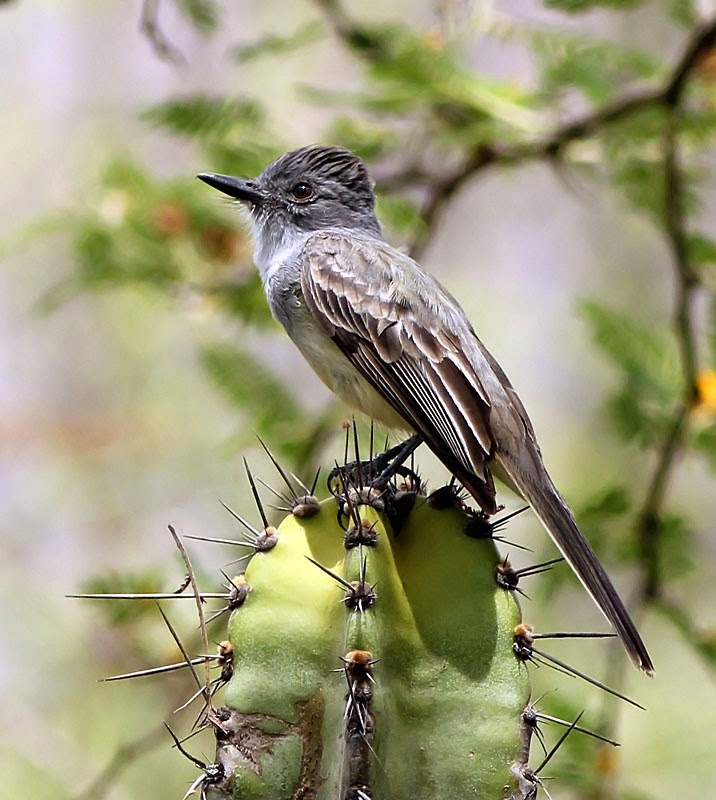White-winged Guan is one of the reasons
that Chaparrí Reserve exists (the other being the Spectacled Bear).
Endemic to just NW Peru, it's one of the rarest birds in South
America, as pressures from habitat loss and hunting nearly wiped it
out. So a program to release captive-bred birds was started here.
Soon they were seeing more of these marvelous birds than they had
released, including adults that couldn't have been offspring,
confirming that some did still exist here. A super tame bird like
this one that I photographed in December 2011 may very well be one of
the released birds, but this far into the program, and ten years
since the last release, third and fourth generation birds from this
very successful program are being seen. The largest single population
of the species is in these hills, and it's estimated that 250 wild
bird exist.
Not so rare is the Andean Condor. If
they had had as much lead ammunition here as we do in North America,
it could very well have gone extinct by now.
I spent most of the time looking for
birds in the denser woods at the lodge and along the stream, but the
entrance road with it's more open, desolate desert had some
interesting birds.
This is where we found Sulphur-throated
Finch as well as flocks of these Parrot-billed Seedeaters.
Once at the lodge there was plenty to
see. This is a Baird's Flycatcher, closely related to Sulphur bellied
Flycatcher.
A Collared Antshrike, one of the
specialties of drier SW Ecuador and NW Peru.
What to call this one? Golden-bellied
Grosbeak? Southern Yellow Grosbeak? Or the current SACC name Golden
Grosbeak, changed just a year or so ago?
The cute Gray-and-white Tyrannulet is
in its own genus (Pseudelaenia) and doesn't seem to be closely
related to other tyrant-flycatchers.
Long-tailed Mockingbird is a
conspicuous bird here.
As is the gorgeous White-tailed Jay,
which comes to feeders.
Pacific Parrotlets fly around in little
twittering flocks, feeding on seeds in the weeds and trees.
The tiny Tawny-crowned Pygmy-Tyrant,
actually showing its rusty front (the front in birds is the same as
forehead – the feathering between the bill and the crown).
Sooty-crowned Flycatcher is endemic to
the dry forests of western Ecuador and Peru.
This bird is called Tropical Pewee by
current AOU/SACC taxonomy, but it's one of the more obvious errors
committed by the deaf lumpers of the past century. The IOC does split
it, calling it Tumbes Pewee, but there's more work to be done there,
as two or three of the remaining subspecies of Tropical Pewee are
obviously not conspecific, with utterly different vocalizations.
The Tumbes Sparrow is a regional
specialty, and one of few true “New World Sparrows” in South
America. It was once together with a bunch of ours in Aimophila,
but it and the southern Stripe-capped Sparrow are in the new genus
Rhynchospiza.
My favorite here was the White-headed
Brushfinch, another New World Sparrow, closely related to our
towhees.





















Hi Rich great post, just a small observation, Rusty-fronted Tody-Flycatcher doesn't live in Chaparri, it only lives east of the Andes, maybe you meant to say Tawny-crowned Pygmy Tyrant?
ReplyDeleteGood catch JP, and thanks for letting me know of my error. I frequently confuse those bird names. Good thing there isn't a Rufous-capped Dwarf-Tyrannulet as well.
ReplyDelete